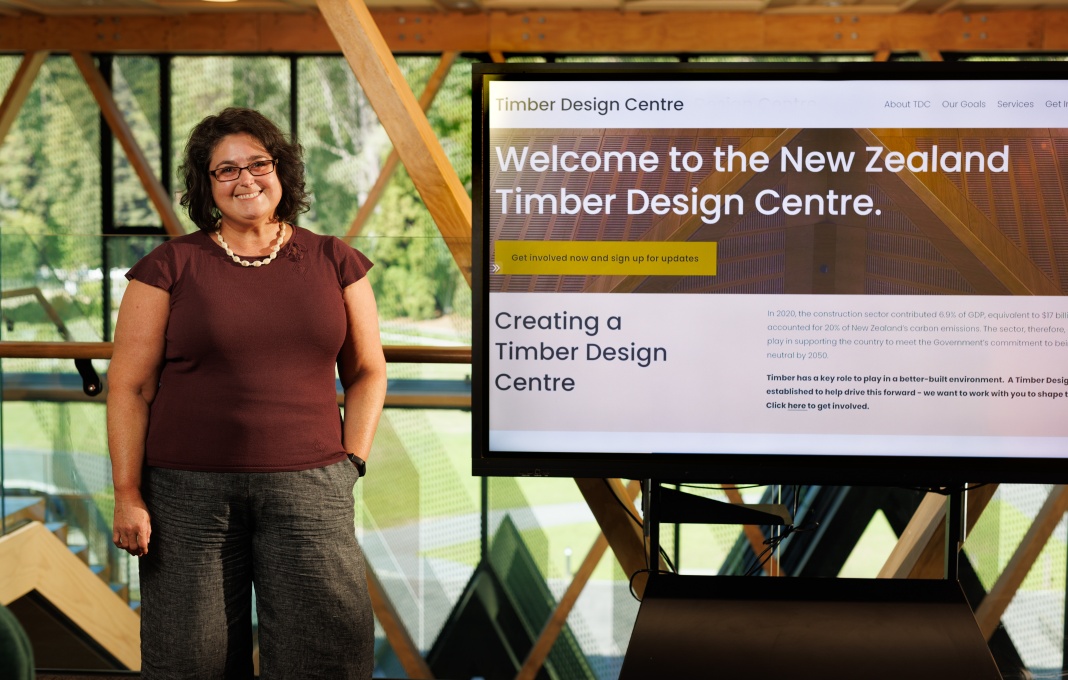Envisioning a future where timber is used more widely in mid to high rise buildings and contributes to carbon neutral targets, is an exciting opportunity in building design. The tools to make this a reality are now coming together with the launch of the Timber Design Centre.
Te Uru Rākau – New Zealand Forest Service deputy director general Jason Wilson announced the launch at the WoodWorks conference today, explaining that the Timber Design Centre aims to increase the use of timber, particularly in structures such as offices, hotels and multi-storey apartments.
The Centre will provide expert advice, research, information and educational resources for those in building design and construction.
The services are being shaped directly by industry and the timberdesigncentre.co.nz website has been created to support this from day one.
Greater use of locally harvested timber products in apartments and offices not only significantly reduce the carbon footprint of these building structures, it also offers the natural characteristic of comfort and warmth to occupants that are rarely found in other building materials.” – Stephen Macaulay, WPMA Chief Executive.
The Centre’s work programme will be co-designed with a wide range of people involved in the building construction process including developers, designers, council planners and consenters, architects, engineers, builders, building owners, students and researchers.
The Centre is an initiative between Te Uru Rākau – New Zealand Forest Service and a consortium comprising Scion (Crown Research Institute), the Wood Processors and Manufacturers Association (WPMA), New Zealand Timber Design Society and BRANZ.
The consortium explains that the greater use of timber in construction provides an opportunity for the sector to support the Government’s commitment to be carbon-neutral by 2050, whilst realising the broader economic and wellbeing benefits of including wood products in multi-storied buildings.
Scion sustainability architect Andrea Stocchero says the world is on a quest to decarbonise and many people don’t realise New Zealand’s built environment is responsible for about 20 percent of the country’s carbon footprint due to the emission of greenhouse gasses over the full life cycle of buildings.
This includes embodied emissions of building materials and products.
“New Zealand can maximise the use of sustainably sourced, locally grown and manufactured wood products.
“Trees sequester carbon from the atmosphere while they’re growing, and as long as the wood is in use, that carbon is stored so it’s not going back into the atmosphere.
“If the timber is sustainably certified it means that the forests are re-growing after each harvest, and the carbon sequestration cycle continues,” he explains.
Timber Design Society president Dr Daniel Moroder says the time is right for New Zealand to have a dedicated timber knowledge centre which provides advice and guidance on timber construction.
“Over recent years, the interest in engineered timber construction has increased significantly and we now need to ensure that clients, designers, contractors and authorities have all the information they need to build efficiently in timber.
“The centre aims to bring the timber industry together and to provide answers to all current obstacles we encounter during the design and consenting process of timber buildings,” he explains.
WPMA chief executive Stephen Macaulay says technological advancements in wood manufacturing provides an opportunity to accelerate the use of engineered mass timber products in medium to high rise buildings across New Zealand.
“The Centre has a key role to play in promoting greater use of an expanding range of timber products available to the construction industry.
“Greater use of locally harvested timber products in apartments and offices not only significantly reduce the carbon footprint of these building structures, it also offers the natural characteristic of comfort and warmth to occupants that are rarely found in other building materials.”
BRANZ General Manager of Research Dr Chris Litten says the development of the centre has been a true collaboration between Government, industry and the research community.
“We are excited by the role the Timber Design Centre will play in challenging the construction sector to produce healthier and more sustainable buildings. BRANZ is proud to support the work of the Timber Design Centre in providing evidence-based information for low-emissions construction.”
The Government is funding the Timber Design Centre as part of its Fit for a Better World roadmap and is one of several key initiatives under way this year to help transform the forest and wood processing sector.










